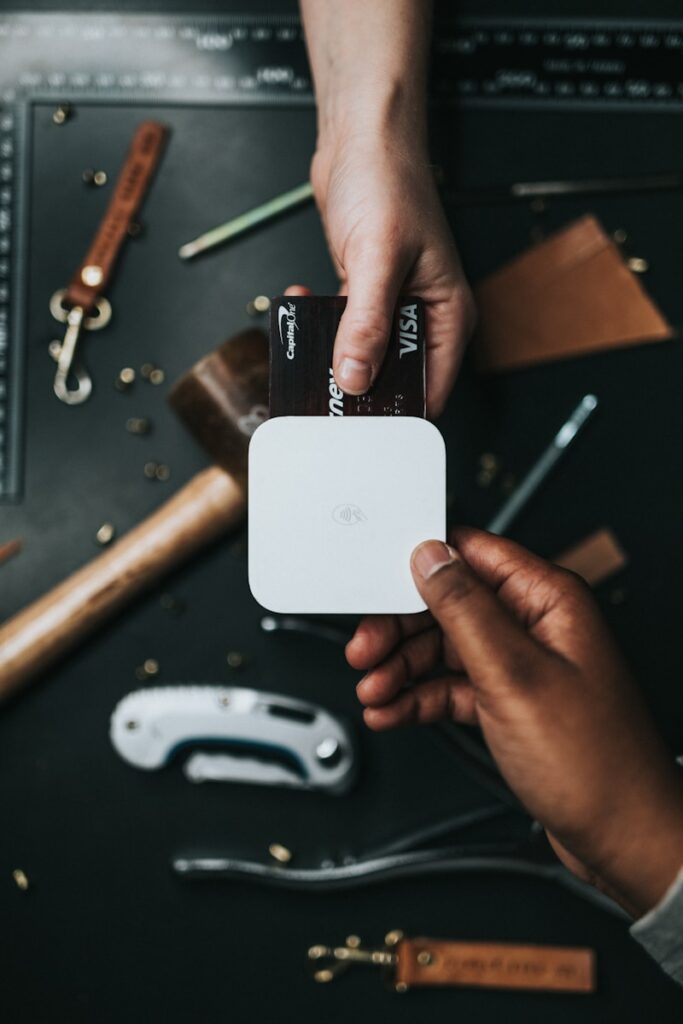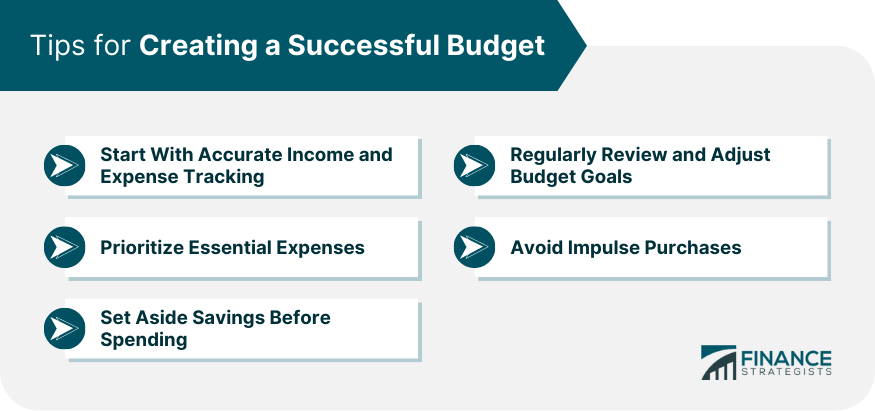
You’ve probably tried to “budget better” at some point in your financial journey. Perhaps you opened a promising spreadsheet with grand dreams of financial control, only to find those aspirations fading fast. Or maybe you downloaded a sleek new budgeting app, diligently using it for a couple of weeks before it, too, became just another ghost on your phone. It’s a common experience, and if it sounds familiar, you’re certainly not alone in this struggle to gain a firmer grip on your finances. The good news is, the challenge isn’t with your intention, but often with the approach.
The reason why those initial attempts may not have worked? Budgeting strategies simply aren’t one-size-fits-all. What works perfectly for a detail-oriented person might feel suffocating to someone who prefers a more hands-off approach. The financial world is brimming with dozens of different budgeting methods, each designed with varying levels of granularity and flexibility. The real trick to successful budgeting isn’t about rigid adherence to a single, arbitrary rule, but rather about discovering the method that genuinely fits your unique lifestyle, income predictability, and spending habits.
Today, we’re going to cut through the noise and demystify the world of personal finance. We’ll break down some of the most popular, effective, and surprisingly fun budgeting techniques and strategies out there. Our goal is to empower you with practical insights and actionable advice, helping you make informed decisions that lead to lasting financial peace. By understanding these diverse approaches, you’ll be well on your way to telling your money where to go, instead of wondering where it went, and taking true control of your financial destiny.

1. **The 50/30/20 rule**When you’re just starting your budgeting journey, or even if you’re looking for a refreshingly simple approach, the 50/30/20 rule is often hailed as one of the most foolproof and strategic methods available. Its beauty lies in its elegant simplicity: it divides your after-tax income into three distinct categories, making it incredibly easy to understand and implement without getting bogged down in minute details. This clear framework provides immediate structure, offering a big-picture approach that can quickly bring clarity to your financial landscape.
The rule dictates that you allocate 50% of your income to your essential “needs.” These are the non-negotiable expenses that keep your life running smoothly, such as your monthly rent or mortgage payment, utility bills, and crucial grocery purchases. These are the costs you can’t live without, forming the foundation of your financial stability. Having a clear percentage for these necessities ensures you’re covering your bases first, providing a secure baseline before considering other expenditures.
Next, 30% of your income is designated for your “wants.” This is your fun money, allowing for those enjoyable expenditures that enhance your quality of life but aren’t strictly essential. Think streaming service subscriptions, dining out at your favorite restaurant, or those convenient DoorDash orders. This category gives you the freedom to indulge without guilt, as long as you stay within the allocated percentage. It’s about balance, ensuring you enjoy life while still being fiscally responsible.
Finally, the remaining 20% of your income is dedicated to “savings and debt.” This crucial portion is what fuels your financial future and helps you achieve your longer-term goals. Whether you’re building an emergency fund, saving for a down payment on a home, or aggressively paying down high-interest debt, this 20% is where your wealth-building truly happens. This method is especially good for beginners who just need training wheels, offering an accessible starting point to develop consistent financial habits and work towards significant milestones.
Read more about: Mastering Your Money: An In-Depth Guide to Personal Budgeting for Financial Control and Future Security

2. **Zero-based budgeting**For those who crave ultimate control and a meticulous understanding of where every single dollar goes, zero-based budgeting presents an incredibly powerful solution. This method operates on the principle that every dollar you earn must be assigned a specific job or purpose. Imagine your money as a team of highly organized employees; none are left standing around idly. Rent, savings contributions, gas for your car, even that seemingly small $14 acai bowl – every expenditure is accounted for before the month even begins.
The core idea is to literally bring your income minus your expenses down to zero each month. This doesn’t mean you spend all your money; rather, it means every dollar is either spent on a planned expense or allocated to a savings goal or debt repayment. By proactively assigning a role to every cent, this method makes it nearly impossible for “mystery money” to slip through the cracks, leaving you wondering where it vanished to. You gain a crystal-clear picture of your financial flow, eliminating ambiguity and fostering profound awareness of your spending patterns.
This robust approach is particularly well-suited for what the context calls “control freaks and detail lovers”—individuals who thrive on precision and comprehensive oversight. It’s one of the best budgeting styles for people who are intensely focused on crushing debt, as it relentlessly forces you to confront and acknowledge where every single cent goes. By seeing the direct impact of each expense, you’re empowered to make intentional choices, redirecting funds from less critical areas to accelerate your debt repayment or build substantial savings. It transforms your budget into a dynamic, proactive tool for financial mastery.
Through its rigorous tracking and allocation, zero-based budgeting not only helps you manage current finances but also cultivates a disciplined mindset. It instills a habit of financial mindfulness, pushing you to question every expense and ensure it aligns with your overarching financial objectives. This method ensures that your money is always working for you, according to a plan you’ve thoughtfully constructed, leaving no room for unplanned leakage or unchecked spending, and providing a solid foundation for achieving ambitious financial goals.
Read more about: Unlock Your Financial Superpower: 15 Must-Have Budgeting App Features Millennials Are Using to Win with Money

3. **Cash stuffing (or the “envelope method”)**Sometimes, the simplest, most tactile methods prove to be the most effective, and the cash stuffing or “envelope method” is a prime example. This classic budgeting technique has seen a surprising resurgence, even being resurrected on platforms like TikTok, proving its timeless appeal and practical effectiveness. The premise is delightfully straightforward: you take actual physical cash and divide it into separate envelopes, each clearly labeled for specific spending categories, such as “groceries,” “gas,” or “takeout.”
What makes this method so potent is its immediate and tangible nature. Once the cash in an envelope is gone, it’s gone. This physical limitation creates a powerful psychological barrier against overspending, a level of accountability that credit cards, with their seemingly endless limits, can never truly replicate. When you physically hand over cash, you feel the transaction in a way that swiping a card often doesn’t convey, making you more mindful of each expenditure and its impact on your allocated budget for that category.
This hands-on approach is particularly beneficial for overspenders who genuinely need discipline and clear, unmistakable limits. It forces a visual and tangible recognition of your spending capacity. If your “takeout” envelope is empty, then ordering in is simply not an option until your next funding cycle. This stark reality helps to break impulsive spending habits and encourages more thoughtful financial decisions, as you directly interact with your limited funds.
By engaging with physical money, the envelope method simplifies complex financial concepts into concrete actions. It removes the abstraction often associated with digital banking and credit, bringing a grounded, real-world perspective to your spending. This clarity and the immediate consequences of depleting an envelope can be a game-changer for those who find themselves consistently exceeding their budgets, providing a straightforward yet powerful tool to regain control and foster more responsible spending habits.

4. **Pay yourself first**In the realm of personal finance, the mantra “pay yourself first” isn’t just a catchy phrase; it’s a profound shift in mindset that can dramatically accelerate your journey toward wealth building and financial security. This method flips the traditional budgeting script entirely. Instead of paying all your bills and covering your expenses, hoping there’s something left over for savings, you prioritize your savings and investments at the very top of your financial hierarchy, and then consciously live off the rest of your income.
The genius of this approach lies in its proactive nature. Whether your goal is to contribute to a Roth IRA, build a robust emergency fund, or save for a significant life event, this method transforms saving from an afterthought into an automatic, non-negotiable priority. You set up automatic transfers from your checking account to your savings or investment accounts immediately after receiving your paycheck, effectively making wealth accumulation an ingrained part of your financial routine. The beauty of this system is that you build wealth in the background, without relying on sheer willpower, which, let’s be honest, can fluctuate daily.
By prioritizing saving, you ensure that your financial future is consistently nurtured, removing the temptation to spend money that might otherwise be allocated to discretionary purchases. It creates a powerful habit of consistent saving, making it feel less like a chore and more like a given. This proactive strategy provides peace of mind, knowing that a portion of your hard-earned money is always working towards your long-term goals, regardless of your immediate spending choices.
This method is best for people singularly focused on building wealth or saving consistently, as it integrates these vital financial actions directly into your income flow. It fosters financial resilience and cultivates a strong habit of putting your future self first. By automating your savings, you create a powerful, self-sustaining mechanism for financial growth, ensuring that your financial goals are met systematically and efficiently, paving the way for a more secure and prosperous future without constant conscious effort.
Read more about: Mastering the ‘Side’ Game: 12 Zero-Investment Concepts for Unleashing Your Potential

5. **Loud budgeting**In an age of constant connectivity and social sharing, a new budgeting trend has emerged that leverages the power of community and accountability: loud budgeting. This isn’t just about managing your money quietly behind the scenes; it’s about making your financial goals public. Think of it as oversharing, but with a highly beneficial financial purpose. You tell your friends, announce it in your group chat, or even share your money goals with your TikTok followers. The idea is to openly declare your intentions and invite external support and oversight.
The core mechanism of loud budgeting is the social pressure it creates. When people around you—your trusted circle, your online community—know what your money goals are, you’re inherently more likely to stick with them. This isn’t about shaming; it’s about built-in accountability. The knowledge that others are aware of your objectives acts as a powerful motivator, providing an extra layer of commitment that can often be more effective than any personal spreadsheet or internal monologue. It transforms your solitary financial journey into a shared endeavor.
This method effectively harnesses the human tendency to want to follow through on commitments made to others. It’s a powerful psychological tool that adds a motivational boost, often making loud budgeting far more compelling and effective than relying solely on individual discipline. When you have a cheering squad, or even just a group of casual observers, it adds a tangible weight to your financial decisions, helping you resist impulse purchases and stay focused on the bigger picture.
Loud budgeting is particularly well-suited for social and accountability-driven individuals—people who find they stick to goals more consistently when others are aware of them. It’s an innovative way to integrate your financial ambitions into your social life, creating a supportive environment that encourages fiscal responsibility. By embracing this transparent approach, you can tap into a powerful external force that reinforces your budgeting efforts, making your money goals feel less like an uphill battle and more like a collective journey towards financial success and peace of mind.
Read more about: Unmasking the Real Expenses: A Comprehensive Guide to Calculating the True Cost of Owning an Older Home

6. **Automated budgeting**In our digital age, automated budgeting offers a seamless and incredibly efficient way to manage your finances without constant manual oversight. This method leverages technology, acting as your personal financial assistant running quietly in the background. It’s ideal for those seeking precise money management without the daily grind of manual tracking.
Apps like MoneyLion, Mint, or Rocket Money are the core of this approach. These platforms expertly track and categorize your expenses, and can even automate savings contributions. They provide a comprehensive overview of your spending, helping you identify trends and areas for improvement with minimal personal effort.
A significant advantage of automated budgeting is its reduction of “decision fatigue.” Instead of constantly deciding where to allocate funds, the system handles it for you. This effortless consistency is a game-changer, making financial discipline almost automatic and ensuring you stay on track. For tech-savvy individuals who prefer a “set it and forget it” approach, this method offers unparalleled convenience and control over their money.
Read more about: The Essential Guide to Building an Unbreakable Home Wi-Fi Network: 14 Steps to Digital Peace of Mind

7. **The Japanese Kakeibo budgeting method**Stepping away from digital tools, the Japanese Kakeibo budgeting method offers a beautifully mindful, pen-and-paper system. It encourages a deep, intentional relationship with your money. This practice isn’t just about tracking numbers; it’s about asking a profound question with every purchase: “Do I really need this?” This deliberate pause cultivates conscious spending habits.
The Kakeibo method requires you to meticulously log every purchase by hand. Beyond recording, you set monthly savings goals and reflect on your spending patterns periodically. This physical act of writing forces you to slow down, engage with your expenditures, and truly understand their impact. It transforms budgeting into a thoughtful dialogue with your money.
By creating this moment of awareness, Kakeibo helps break mindless spending habits that lead to budget overruns. It fosters a sense of control and intentionality many find deeply satisfying. If you crave mindfulness in your financial life and want to genuinely understand your money’s flow, this traditional yet highly effective method could be your perfect match for intentional spending.

8. **The 80/20 budget (also known as the Pareto principle)**For those who value simplicity in financial planning, the 80/20 budget method is a refreshing option. Its elegance is in its straightforwardness: save 20% of your income, then freely spend the remaining 80%. This eliminates the need for intricate categorization or detailed tracking of every single dollar, appealing strongly to minimalists or anyone daunted by complex systems.
This approach is aptly described as the “low-effort meal prep” of budgeting plans, streamlining financial decision-making. Its primary goal is to ensure a significant portion of your income consistently funds savings and financial objectives. Once that crucial 20% is secured, the rest of your money is available for use with considerable freedom and flexibility.
The true appeal of the 80/20 rule lies in guaranteeing savings without imposing overly strict spending limits. It allows for spontaneous purchases and enjoyable experiences, provided your core savings commitment is met. If you desire financial security but prefer not to “think too hard about money stuff,” this straightforward method perfectly balances discipline with personal freedom.

9. **Bi-weekly budgeting**While many budgeting methods assume a monthly pay cycle, bi-weekly budgeting offers a more intuitive approach for salaried workers paid every two weeks. This method intelligently aligns your financial plan directly with your paycheck schedule. It ensures your budget accurately reflects how money consistently enters your account, pragmatically simplifying cash flow management.
Aligning your budget with bi-weekly paychecks creates significantly smoother cash flow. Instead of attempting to stretch a single monthly sum over four weeks, you manage smaller, more frequent allocations. This simplifies meeting regular expenses like rent, utilities, and subscriptions, as funds are available closer to their due dates.
This synchronization effectively mitigates the stressful “mid-month panic” that often occurs when funds diminish before the next paycheck. Planning for two distinct budget periods each month provides a clearer, more immediate picture of available funds. For salaried workers seeking greater financial clarity and a less anxious approach to daily money management, bi-weekly budgeting is an invaluable tool for control and peace of mind.
Read more about: Unlock Thousands in Savings: Homeowners’ Ultimate Guide to Smart Mortgage Payment Hacks

10. **Reversed budgeting**For those who resist meticulous expense tracking yet remain committed to financial goals, reversed budgeting provides an empowering alternative. This method cleverly reverses the traditional budgeting mindset, prioritizing your major financial aspirations first. You save for your future, then enjoy the liberty to “blow the rest guilt-free.”
The fundamental principle involves automating contributions to savings or investment goals immediately at the start of your pay cycle. Whether for a home down payment, retirement fund, or dream vacation, these crucial allocations are secured upfront. This ensures your financial priorities are always handled, alleviating the stress often associated with saving.
Once essential savings are set aside, the remaining funds become your guilt-free spending money. This grants you permission to “live a little,” enjoying your hard-earned cash and making discretionary purchases without constantly worrying about overspending. Reversed budgeting is ideal for individuals who dislike tracking every expense but still demand tangible results, offering a liberating path to financial success.
### How to Choose the Right Budgeting Method for You
With numerous powerful budgeting strategies available, the crucial decision is finding the one truly suited to your unique life. The objective isn’t to find a universally “perfect” option, but rather a system that genuinely resonates with your personal circumstances and preferences. Here’s a guide to help you select a method you’ll actually commit to.
**Income Predictability: Steady vs. Irregular Earnings**
Your income stream significantly influences the most effective budgeting strategy. For consistent paychecks on a regular schedule, you have greater flexibility. Methods like the 50/30/20 rule or zero-based budgeting often perform well, offering a clear and predictable framework that complements steady earnings through structured allocation and easy planning.
Conversely, if your income “bounces around,” as is common with freelance or gig work, a different approach becomes necessary. In these situations, “pay yourself first” or the “envelope method” can be incredibly beneficial. They ensure a portion of income is proactively set aside for savings or essentials as soon as it’s received, providing a financial buffer against unpredictable deposits. This proactive strategy builds stability despite fluctuating earnings.
**Spending Habits: Strict Limits or General Awareness?**
Understanding your typical spending behavior is another critical factor. If you frequently overspend or struggle with impulse purchases, “tough-love systems” with built-in guardrails can be invaluable. Zero-based budgeting, which assigns a purpose to every dollar, or the cash stuffing (envelope method), with its tangible limits, are excellent choices for enforcing discipline and preventing financial leaks.
However, if you’re already mindful of your spending and generally stay within your means, such rigid control might be unnecessary. A more relaxed approach, like the 50/30/20 rule or proportional budgeting, could provide sufficient structure without feeling overly restrictive. These methods offer a broad framework that allows flexibility while promoting responsible management, proving that not everyone needs an iron fist to control their wallet.
**Time Commitment: Detailed System or Low-Effort Approach?**
Not everyone enjoys meticulously tracking every dollar. Your willingness to dedicate time to budgeting should heavily influence your choice. If you prefer quick and simple management, methods like the 50/30/20 rule or “pay yourself first” are ideal. They require minimal ongoing effort post-setup, allowing efficient financial management without becoming a full-time accountant.
Conversely, if logging transactions and digging into details appeal to you, gaining a comprehensive understanding of your financial flow, then zero-based budgeting or the envelope system will offer the extra control you desire. These strategies provide granular insight, empowering highly intentional financial decisions. They reward your commitment with unparalleled financial clarity and mastery.
**Financial Goals: Debt Payoff, Saving, or Flexibility?**
Your primary financial objectives should unequivocally guide your budgeting choice. If “crushing debt is the mission,” strategies like zero-based budgeting or the envelope method help you stay laser-focused. They compel you to confront every expenditure, facilitating reallocation of funds directly towards accelerated debt repayment, transforming every dollar into a tool against liabilities.
If “saving for the future” or “leaving some wiggle room” for discretionary spending is your main goal, “pay yourself first” or the 50/30/20 rule will serve you better. These approaches prioritize consistent savings while offering enough flexibility to enjoy life. They build a solid foundation for wealth accumulation without deprivation, balancing present joys with future security.
**Preferred Style: Apps/Spreadsheets or Pen-and-Paper Simplicity?**
The most effective budgeting strategy also aligns with how you prefer to interact with your finances. If you’re a “tech fan,” you’ll likely gravitate toward automated tools, apps, or spreadsheets. These digital solutions pair naturally with methods like zero-based budgeting or the 50/30/20 rule, offering instant updates and powerful analytical capabilities, often accessible via your smartphone.
However, if you prefer a tactile, tangible engagement with your money, traditional methods like the envelope method or the Japanese Kakeibo budgeting method make the process feel incredibly intentional and grounded. These hands-on approaches remove the abstraction of digital numbers, fostering a deeper, more personal connection to your financial decisions. The most effective budget is ultimately the one you enjoy and can consistently maintain.
### Your Money, Your Rules
Read more about: The Great American Downshift: Unpacking Why More Consumers Are Rediscovering the Value of Compact Cars
It’s truly empowering to realize the vast array of budgeting options available, each catering to a unique financial personality. The most important lesson isn’t about painstakingly selecting the “perfect” option from the outset; it’s about discovering a system you’ll actually commit to. Don’t hesitate to experiment, try different approaches, and adjust as your life and financial goals evolve. That’s the real secret to mastering effective budgeting techniques and gaining genuine control over your financial destiny. When you transition from wondering where your money went to actively directing its flow, you unlock a profound sense of financial peace and security.




